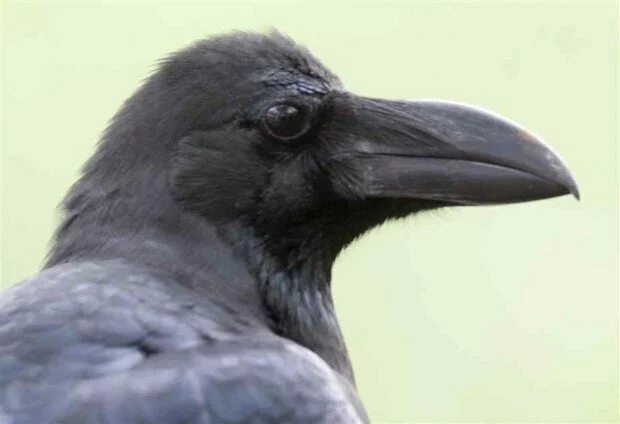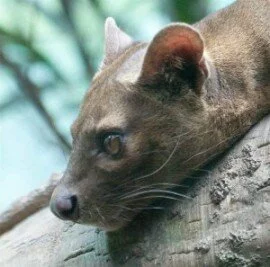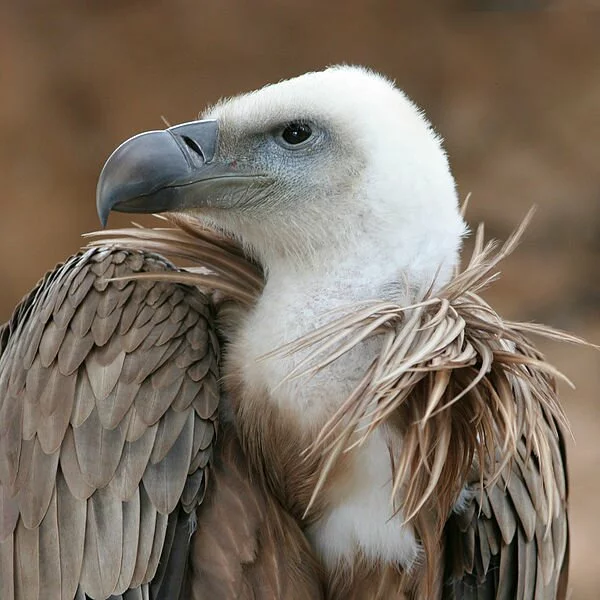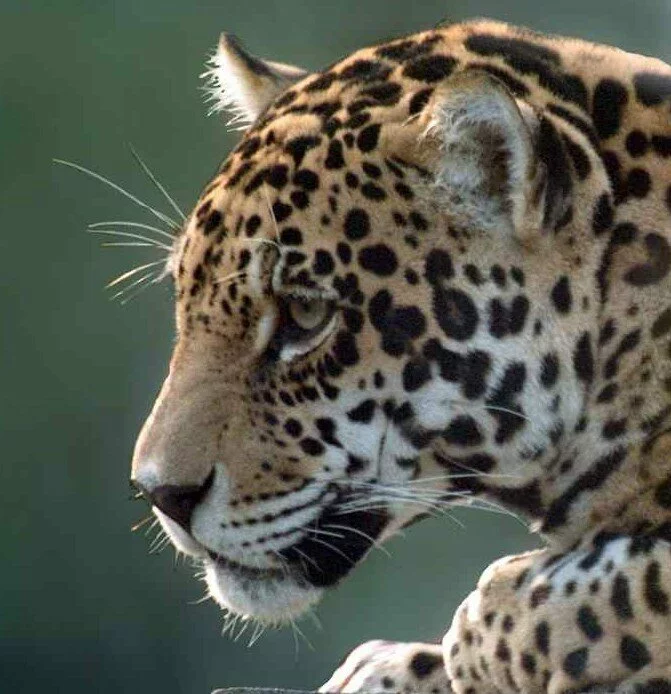Madagascar possesses what is possibly one of the most amazing modern ecosystems known to science. It contains a wide variety of unique and exotic animals, many of which are found only in this large island off the southeastern coast of Africa. This isolation from the rest of the world has allowed many of its inhabitants freedom from the more intense ecological competition encountered in many other ecosystems throughout the world, resulting in a variety of unexpected adaptations which have captivated countless scientists and tourists throughout the years. Possibly the most admired and recognized of Madagascar’s fantastic collection of animals are the lemurs, a rare group of primates which are only found in Madagascar and certain smaller neighboring islands. Lemurs are known for their different appearance from most other primates while possessing the high intelligence representative of their relatives. Among the many species of lemurs exists an animal that has essentially become the symbol of Madagascar’s great fauna, the ring-tailed lemur (Lemur catta). It truly is no wonder that the ring-tailed lemur reached this status once one considers its striking beauty and intelligence. These are not its only interesting qualities, however, as the curious behavior and lifestyle of this unique primate are of equal fascination to those who observe them. While Madagascar does contain many other exciting creatures, the ring-tailed lemur is among the first species one would want to observe when studying the ecosystem of this island, as it is truly one of its most incredible inhabitants.
The ring-tailed lemur is rather average-sized compared to other lemurs, though it is still a fairly long animal; while its head and body are 17.75 inches in length, its sizable tail adds another 21.75 inches. On average, these lemurs weigh 5-7.5 lbs.[1] Discerning this species from other lemur species is not particularly difficult, as this species’ common name originates from its long tail, which possesses a series of black and white rings. The rest of this lemur’s body consists of a gray or rosy brown back with lighter gray or brown hind legs and a white stomach. Its face also sports a white coloration, though also with a black nose and triangular black markings around their eyes.[2] This gives it a somewhat raccoon-like appearance.
Ring-tailed lemurs are intelligent and unique creatures which have become symbols of Madagascar's wildlife. Photograph Source: Northrup.org
It is along the forests and rivers of Madagascar where you will find these graceful animals. They prefer hot environments and will generally remain in these areas unless their food supplies begin to diminish. These lemurs commonly dwell in rather thick forest areas, making them difficult to locate and study in the wild.[3] Interestingly enough, ring-tailed lemurs are primarily terrestrial, spending more time on the ground than any other lemur species.[4]
Ring-tailed lemurs mainly subsist on a herbivorous diet, consuming fruits and leaves. They will often take advantage of tamarind trees whenever they are in season, as these trees will provide them with up to half of their food intake. During the dry season, however, these lemurs are left with fewer choices and must take whatever they can get. This includes foods such as dried out wood, insects, flowers, and sap.[5]
Lemurs must cope with several predators in the wild. Their largest natural predator is a formidable cat-like hunter known as a fossa. Though this rare creature generally preys on other animals during the rainy season, it will often resort to hunting lemurs during the dry season when the amount of prey they can hunt begins to dwindle. The harrier hawk is another common predator of lemurs. Using its excellent vision, these powerful birds locate potential targets while flying and then dive from the air, grasping their prey using their powerful claws. Another bird, the Madagascar buzzard, has been known to attack lemurs on occasion. The Madagascar boa, which commonly inhabits the same trees lemurs enjoy, is another fearsome predator. Being a constrictor, this boa strikes at a nearby animal and then wraps its mighty coils around its prey, slowly killing it through asphyxiation. Humans, however, are by far the lemurs’ greatest threat. Villagers in Madagascar often hunt lemurs for food in order to feed their families. Economically poor, these villages often have few choices when it comes to what food they can get. Humans also present a threat to the species in the form of hunters, who travel from all over the world in order to hunt these creatures for sport.[6] When one also considers the effects of deforestation (which is also leading many other animal species in Madagascar to extinction), it is no surprise that the ring-tailed lemur has become endangered. Though the lemurs may have been able to tolerate the pressures of the natural predators they possessed for countless years, the new stresses created for the species by man may be too great of a challenge for these animals to handle.
The fossa is a common predator of the ring-tailed lemur. Photograph Credit: Lazette Gifford
Possibly the most fascinating aspect of the lives of these creatures is their social behavior. Like many other primates, ring-tailed lemurs are highly social animals and live in groups called troops consisting of 12 to 24 individuals.[7] There is an interesting design in the hierarchy of these troops; it is the females that are in charge. Led by their dominant female, the troop’s females express little tolerance to any males within the troop, and will commonly force them to leave after some time.[8] In fact, as many as ¼ of all males leave in search of new troops every mating season. This may seem cruel and unnecessary, but there is a reason behind this behavior; forcing males to leave and join other groups prevents inbreeding, as it reduces the chances of a male breeding with one of his own daughters. The females are usually much friendlier towards the offspring of other females, however. Female lemurs have been known to actually switch infants, babysit, form play groups, and even allow infants other than their own to nurse. This level of maternal cooperation is nothing short of incredible. Despite their heightened aggression towards the males in their social groups, it appears that even these rowdy females can make good mothers.
Although ring-tailed lemurs are far from lazy, they always appreciate the opportunity to relax together. Before they head out to search for food, they will often sunbathe early in the morning. Many times, these creatures can be observed sunbathing in a humorous and human-like position, with their front legs resting on their hind legs and their stomachs exposed to the sun. This resembles a person meditating in a yoga position with their legs crossed.[9]
There are times when it is necessary to hold of moments of relaxation, though. Although territories between different groups are very defined and do not overlap, there is occasional tension when another group of females ventures too close. During these times, females will aggressively defend their territory by running and screaming at each other. Despite all of this sudden agitation, however, physical contact is rare in these bouts.[10]
Nonetheless, the most violent part of these lemurs’ lives comes with the arrival of mating season, which occurs from mid April to June. The females are in estrus for less than a day and all of the females within a troop com into estrus within two weeks of each other. During this time, females will compete among themselves for space and resources. Even the males begin to resort to aggressive behavior and battle for reproductive access to the females, as there is typically one central male who interacts more with females than do the other males.[11] This is where one of the more unusual styles of combat seen in nature takes place. Ring-tailed lemurs possess powerful scent glands which they normally use to mark their territories, like many other animals do. However, during mating season, male ring-tailed lemurs will turn their powerful scent glands into weapons. They accomplish this by dragging and raking their tails between their pressed forearms (the scent glands are located in their wrists) until their tails are sufficiently covered in the foul secretions. With their tails (normally used for counter balance while leaping from tree to tree) now prepared as weapons, the males begin to wave and vibrate their tails. This releases the strong odors of their secretions, and they continue to do this until the rival males back down.[12] It is believed that it is the male with the strongest scent that wins the right to mate with all the females.[13] In other words, the most foul-smelling male is the victor. As unusual as it seems for such beautiful animals to battle in such an unattractive way, it appears to work well for them.
Lemurs are primates, although they are somewhat different from their relatives in their design. Photograph Credit: David Blank
After the chemical warfare is over, the victorious male mates with the females of the troop. Gestation normally lasts 4 to 4.5 months for ring-tailed lemurs, and one or two offspring are birthed. Although infant mortality is high, the cooperation among females in the care of the offspring helps to raise their chances of survival. The females will shelter, groom, carry, and feed the young. Though the infants are initially carried on the abdomen, they soon begin to ride on the mother’s back instead. The young lemurs will begin to consume solid food by the time they are about two months old, yet they may not be weaned up until the age of five months.[14]
As interesting and unique as these animals are, the future of ring-tailed lemurs (as well as many more of Madagascar’s species) is not certain. Though sport hunting and predation by humans has certainly added pressures to the species, deforestation is the greatest threat to these creatures. Fires, overgrazing of domestic livestock, and logging are slowly robbing these animals of their natural habitat, forcing them closer and closer to extinction.[15] As they are not located elsewhere in the world, the protection of their environment in Madagascar and nearby islands is vital to their success. This may, hopefully, become a possibility as more and more people become aware of the ring-tailed lemur’s approaching end.
Lemurs are very caring with their offspring. A troop of females always cooperates in the nurturing of their young. Photograph Credit: David Blank
The ring-tailed lemur is surely an excellent representative of an ecosystem known for its unique wildlife. From its beautiful design and hierarchical social lifestyle to its unusual form of combat during mating season, these lemurs are simply full of surprises. What matters now is ensuring these creatures a future in this world as they are pushed further and further to extinction by deforestation. Put simply, these animals are just too amazing to lose. They are a species like no other, and certainly creatures worth fighting for.
[1] “Ring-Tailed Lemur.” www.animals.nationalgeographic.com. http://animals.nationalgeographic.com/animals/mammals/ring-tailed-lemur/ (accessed September 15, 2011).
[2] “Lemur catta.” www.animaldiversity.ummz.umich.edu. http://animaldiversity.ummz.umich.edu/site/accounts/information/Lemur_catta.html (accessed September 15, 2011).
[3] “Ring-Tailed Lemur.” www.lemurworld.com. http://www.lemurworld.com/ring-tailed-lemur.html (accessed September 15, 2011).
[4] “Detailed Information on Ring-tailed Lemurs: (Malagasy Names: Maki, Hira).” www.tigerhomes.org. http://www.tigerhomes.org/ringtailed_lemur.cfm (accessed September 15, 2011).
[5] “Ring-Tailed Lemur.” www.lemurworld.com. http://www.lemurworld.com/ring-tailed-lemur.html (accessed September 15, 2011).
[6] Ibid
[7] “Lemur catta.” www.animaldiversity.ummz.umich.edu. http://animaldiversity.ummz.umich.edu/site/accounts/information/Lemur_catta.html (accessed September 15, 2011).
[8] “Ring-Tailed Lemur.” www.lemurworld.com. http://www.lemurworld.com/ring-tailed-lemur.html (accessed September 15, 2011).
[9] “Lemur catta.” www.animaldiversity.ummz.umich.edu. http://animaldiversity.ummz.umich.edu/site/accounts/information/Lemur_catta.html (accessed September 15, 2011).
[10] “Detailed Information on Ring-tailed Lemurs: (Malagasy Names: Maki, Hira).” www.tigerhomes.org. http://www.tigerhomes.org/ringtailed_lemur.cfm (accessed September 15, 2011).
[11] “Lemur catta.” www.animaldiversity.ummz.umich.edu. http://animaldiversity.ummz.umich.edu/site/accounts/information/Lemur_catta.html (accessed September 15, 2011).
[12] “Detailed Information on Ring-tailed Lemurs: (Malagasy Names: Maki, Hira).” www.tigerhomes.org. http://www.tigerhomes.org/ringtailed_lemur.cfm (accessed September 15, 2011).
[13] “Ring-Tailed Lemur.” www.lemurworld.com. http://www.lemurworld.com/ring-tailed-lemur.html (accessed September 15, 2011).
[14] “Lemur catta.” www.animaldiversity.ummz.umich.edu. http://animaldiversity.ummz.umich.edu/site/accounts/information/Lemur_catta.html (accessed September 15, 2011).
[15] “Ring-Tailed Lemur.” www.defendors.org. http://www.defenders.org/wildlife_and_habitat/wildlife/ring-tailed_lemur.php (accessed September 15, 2011).







